Adding a gazebo to your landscape gives you a great space for outdoor recreation. You can entertain your visitors there, you can play games with the family in it, and you can do a lot more.
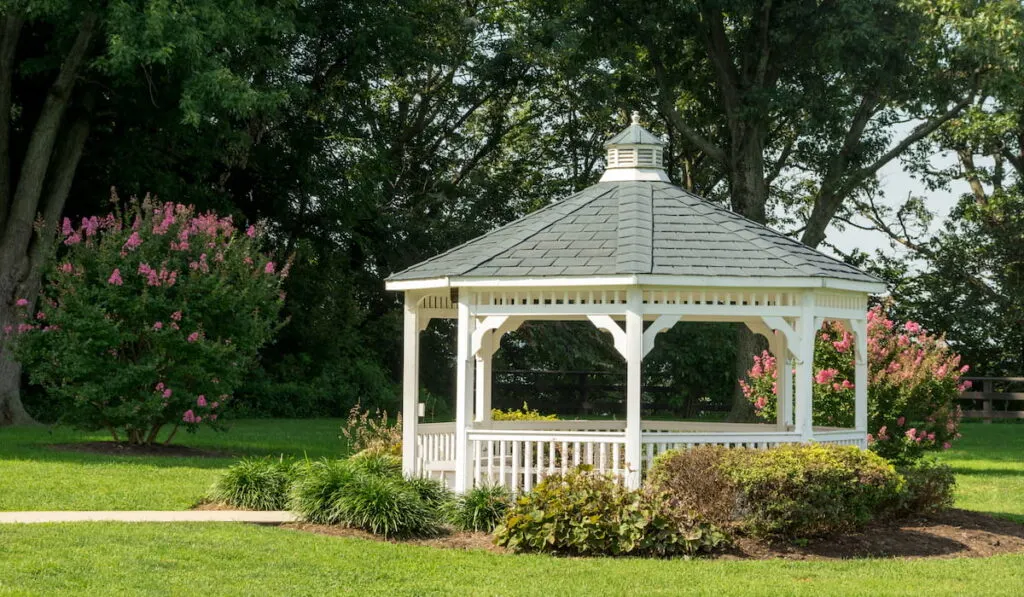
Because gazebos are installed outdoors, they are exposed to the elements constantly.
Continual exposure to water as precipitation will cause your gazebo to fade quickly.
Even those gazebos made with water-resistant materials will lose that resistance faster when continually exposed to moisture in any way.
To prevent this hastened deterioration, you have to waterproof your gazebo.
In this article, we share some tips to assist you in waterproofing and protecting your gazebo.
Table of Contents
How to Protect Your Gazebo From Rain
You can protect your gazebo from rain through any of the methods stated below:
1. Install a Thatch Roof

If you live in an area where it rains occasionally, you can construct a thatch roof over your gazebo.
After getting wet, thatch roofs need ample time to dry out, else they rot.
When installing a thatch roof, do not install it in a location where vegetation might fall on it, such as under the canopy of shade trees.
When vegetation falls on a thatch roof, the rotting process may be hastened.
To get the best functionality from a thatch roof, let a professional install it for you.
2. Cover It With a Tarp
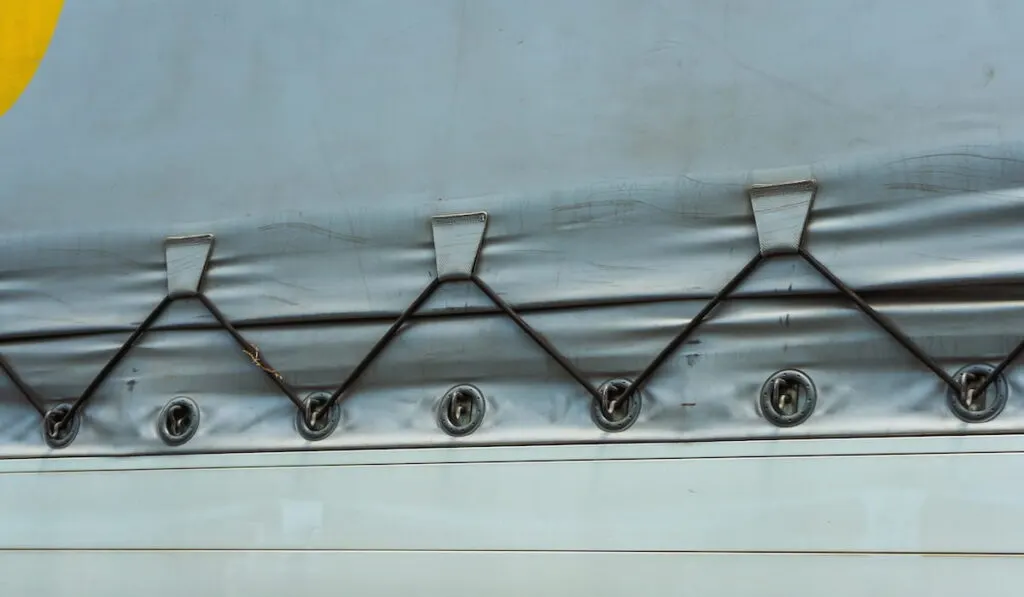
Another option you have is to cover the gazebo with a tarp. This is a pretty easy and straightforward method.
After covering the gazebo, you should anchor the tarp.
Sometimes rain comes with strong wind, which can displace the tarp. But with anchors, this becomes less likely.
To anchor the tarp, tie ropes to the grommets. Then tie the other end of the rope to a heavy object or support.
Ensure that whatever anchors the tarp will not be moved by wind easily.
3. Install Corrugated Fiberglass
Installing corrugated fiberglass will shut out rain from your gazebo completely.
Corrugated fiberglass panels are impermeable, and you can install them yourself.
You could even add some aesthetics to your gazebo with corrugated fiberglass. Since the panels come in different colors and are translucent, they can make for some attractive designs.
4. Install Wood Shingle and Builder’s Felt
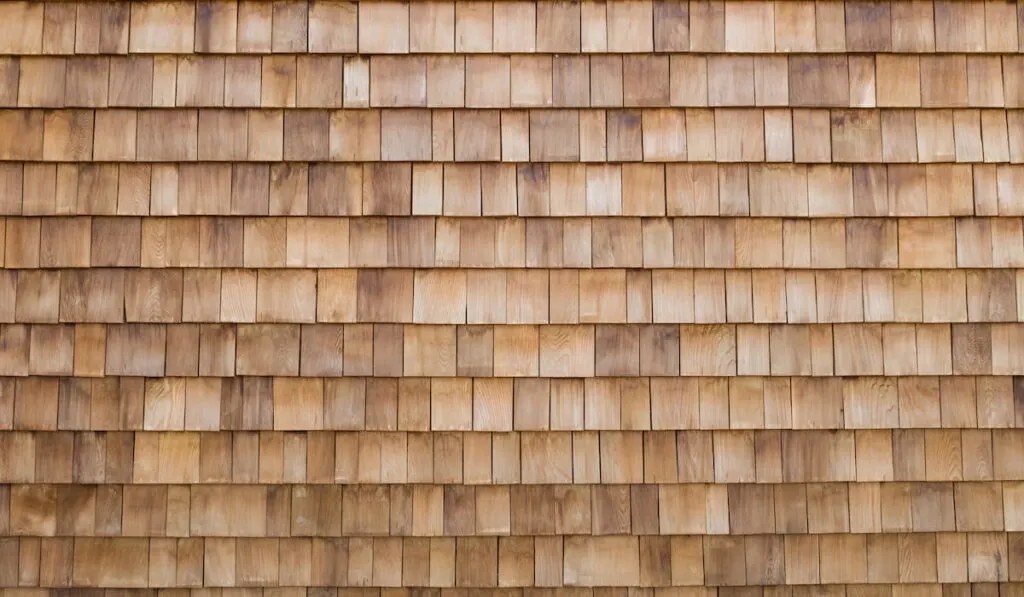
You can also use a combination of wood shingles and builder’s felt for your gazebo protection.
This is particularly desirable when you are trying to maintain your gazebo’s uniform appearance.
When installing this combo, the builder’s felt comes first. After installing the felt, you may then fix the wood shingles.
Of the many types of wood shingle materials, cedar offers the most resistance to water.
It is more expensive, but highly water-repellant, so you may have to consider the cost.
If you prefer cheaper options to cedar wood shingles, you can try asphalt shingles, clay shingles, or composite shingles.
5. Gazebo Materials
Here, we will explore some of the materials you can consider for use in your new gazebo:
Wood

Gazebos made from wood are easy to customize, and they offer a nature-esque look to your outdoor space.
Compared to other materials, however, they need more maintenance.
Also, the wood to be used must be treated to keep it free of damage.
There are various types of wood you can use in constructing your gazebo. Woods like cedar, redwood, and cypress will offer more longevity than most.
These types of wood are water-resistant and relatively rot-resistant.
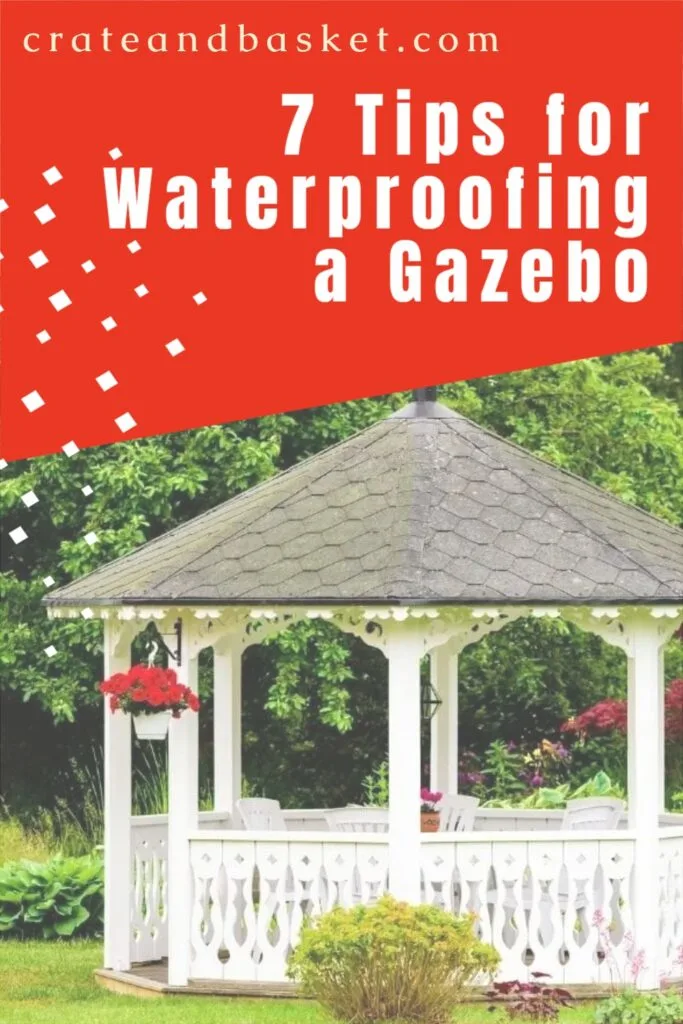
Vinyl
Vinyl offers elegance similar to that of wood. But unlike wood, it does not require much maintenance.
It can also be easier to install – some designs even come in easy-to-assemble kits.
Vinyl gazebos do not stain easily, can be cleaned easily, and do not require treatment.
Metal
If you want extra sturdiness for your gazebo, you may consider constructing it of metal.
Some options available to you are aluminum, wrought iron, and steel. Of these three, aluminum is the easiest to install and is quite inexpensive. It is also more common and lighter than the other two.
Steel and wrought iron are heavier and more durable than aluminum. They are more suited for gazebos constructed in a permanent location.
Metal gazebos are rot-resistant, low-maintenance, and rarely get damaged.
Canvas
Canvas gazebos come with metal or plastic frames and heavy-duty canvas fabric as the cover.
Canvas gazebos are quite affordable, and you can use them for multiple purposes. They are available in various patterns and colors, so you can get them in unique looks.
The texture of the fabric provides considerable protection against deterioration by the elements.
However, they may require additional waterproofing treatment, which we will discuss shortly.
But that aside, canvas gazebos are quite easy to install. They can also be easily uninstalled and stored when necessary.

Is a Polyester Gazebo Canopy Waterproof?
A polyester gazebo is water-resistant to an extent. While it might resist the penetration of water to a degree, it will become permeable with prolonged moisture.
Unlined or single-sheet polyester offers less protection against water. So, when using polyester fabric as a gazebo covering, it is better to use lined polyester.
Polyester that is lined or treated with water-resistant materials like PVC is considerably more waterproof.
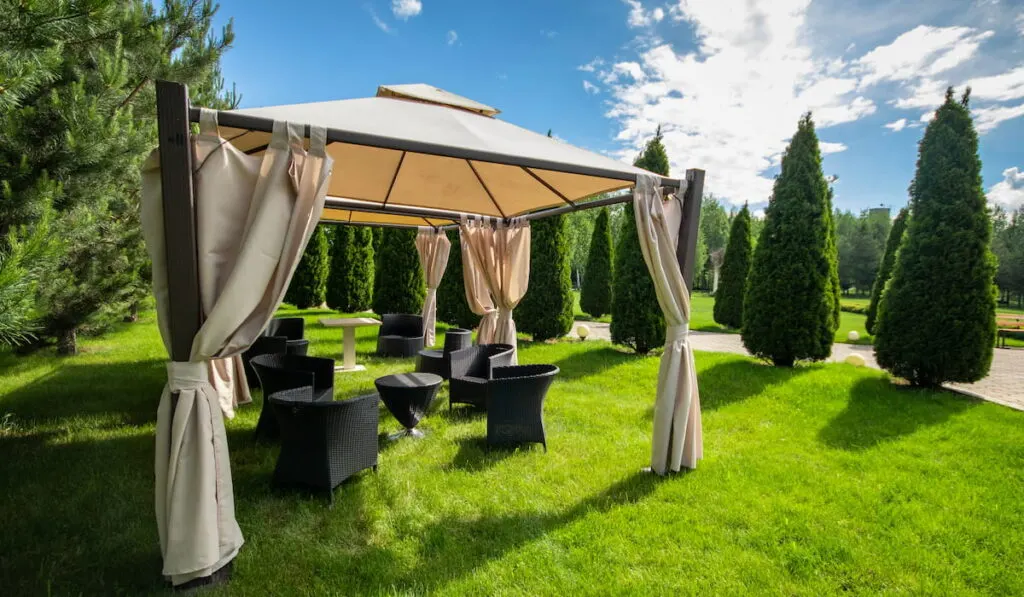
6. How to Waterproof a Gazebo Canopy or Canvas
To waterproof a gazebo canopy, you need a waterproof spray, such as a silicone spray.
When you have the spray, follow these steps:
- Detach the canopy from its frame, preferably on a warm day.
- Wash the canopy.
- Dry the canopy.
- Apply silicone spray on one side of the canopy, then allow to dry.
- Apply the spray on the other side of the canopy, then allow it to dry.
- Reattach the canopy to its frame.

7. How to Waterproof a Wooden Gazebo
Waterproofing a wooden gazebo is quite straightforward. All you need to do is paint it with a tinted or clear waterproof sealant.
One upside of using these sealants is that the grain of your wood remains visible.
With time, the protective effect of the sealant on the wood wanes. You may have to reapply the sealant after a few years.
Resources
- https://homeguides.sfgate.com/cover-wood-gazebo-avoid-rain-87179.html
- https://www.bobvila.com/articles/types-of-shingles/
- https://www.builddirect.com/learning-center/outdoor/gazebo-guide-overview-of-materials/
- https://www.woodmagazine.com/materials-guide/lumber/outdoor-lumber
- https://www.gazebo.com/backyard-structure-materials/#gazebos
- https://www.galatent.co.uk/advice-centre/gazebo/a-guide-to-weather-proof-and-waterproof-gazebos
- https://bestgazebos.co.uk/uncategorized/how-do-you-waterproof-your-gazebo
- https://waterproofgazebos.com/how-to-waterproof-gazebo-canopy/
- https://www.doityourself.com/stry/how-to-waterproof-a-canvas-gazebo-cover
- https://outdoorlivingtoday.com/maintenance-care-gazebo/
